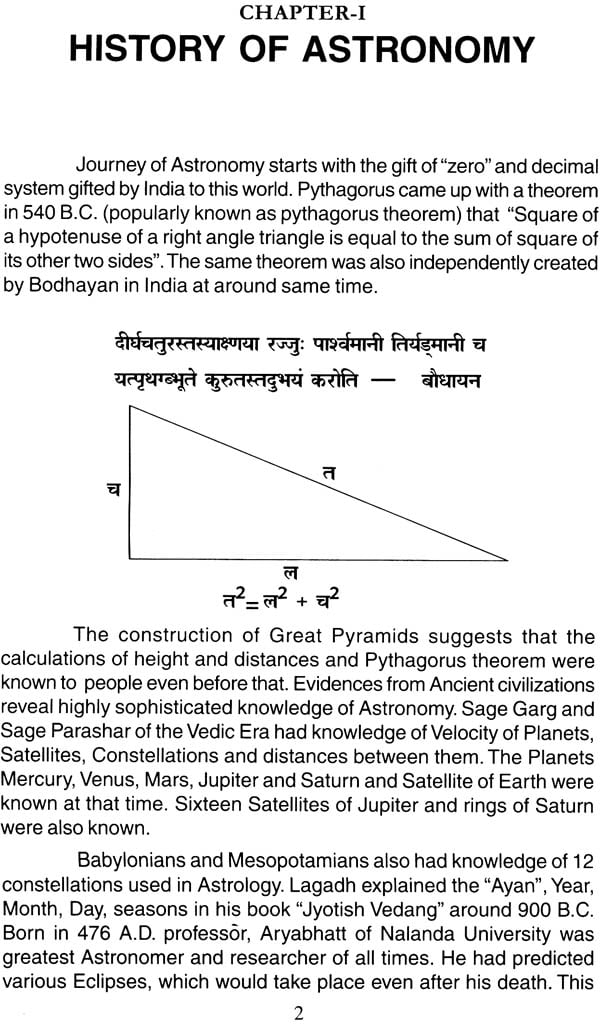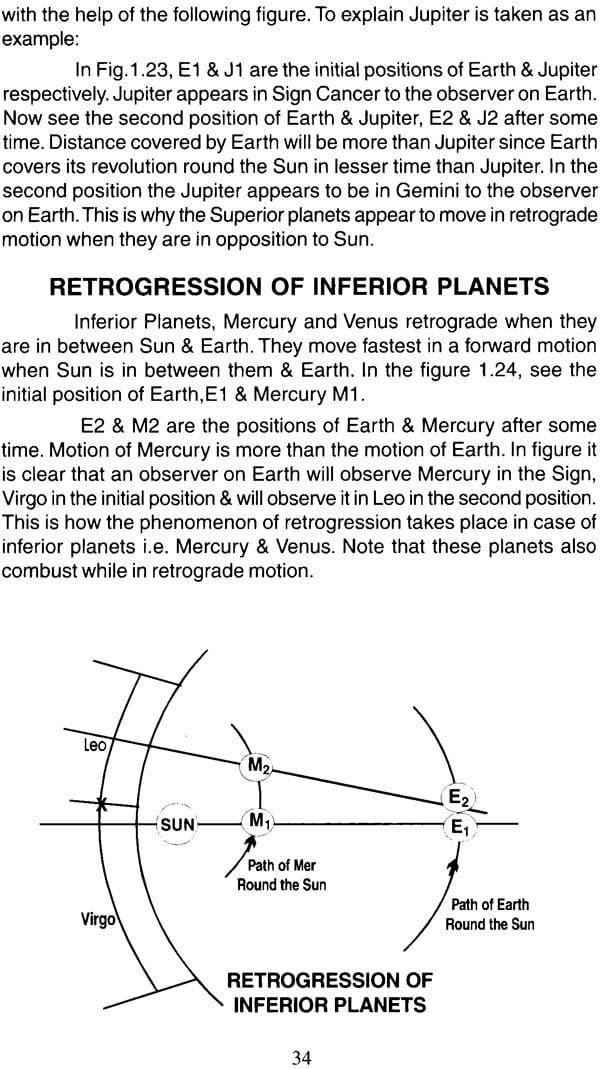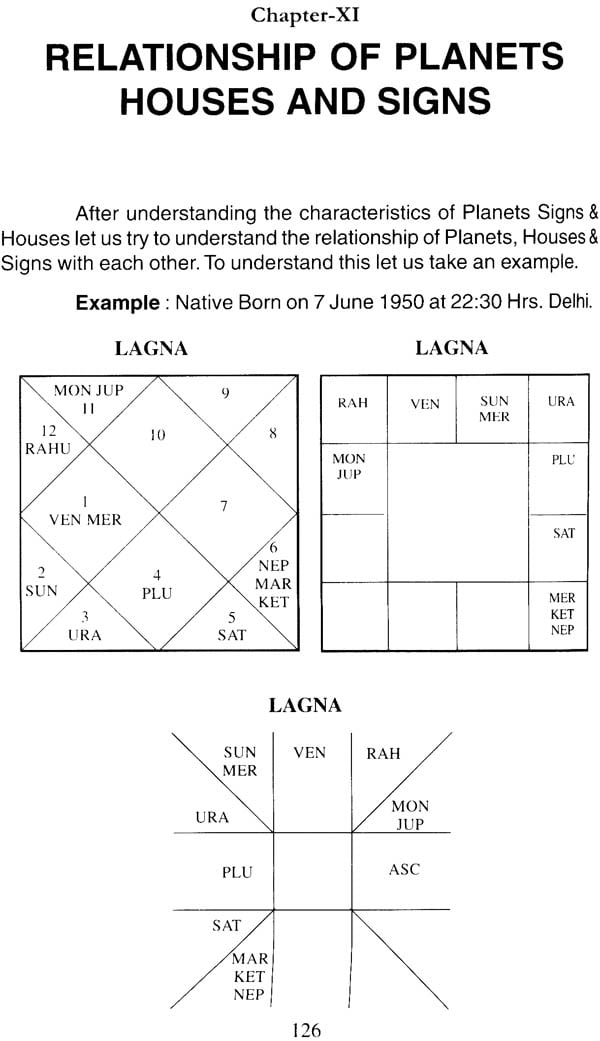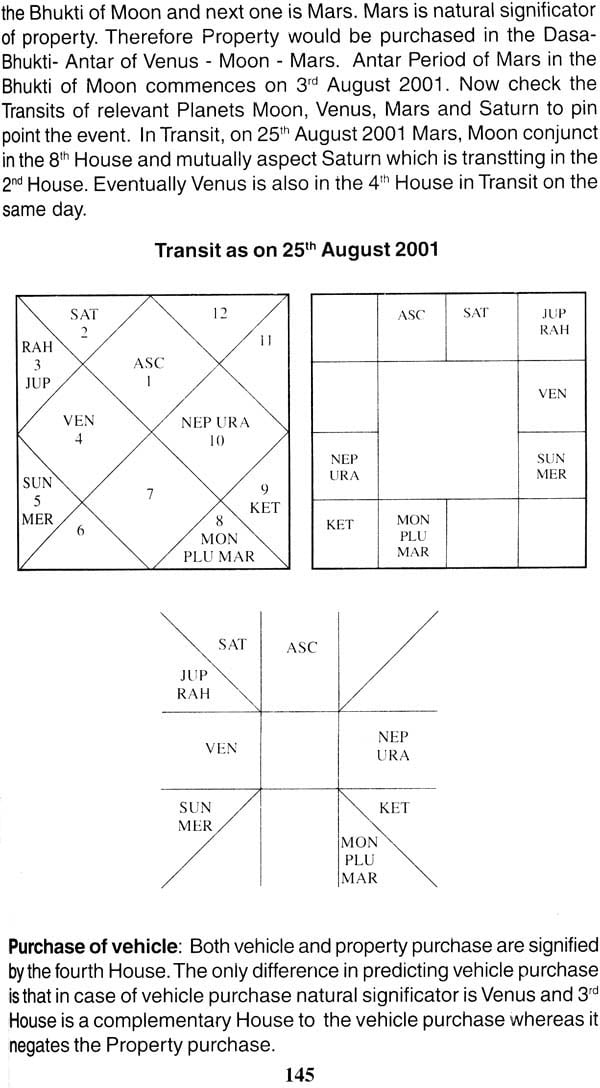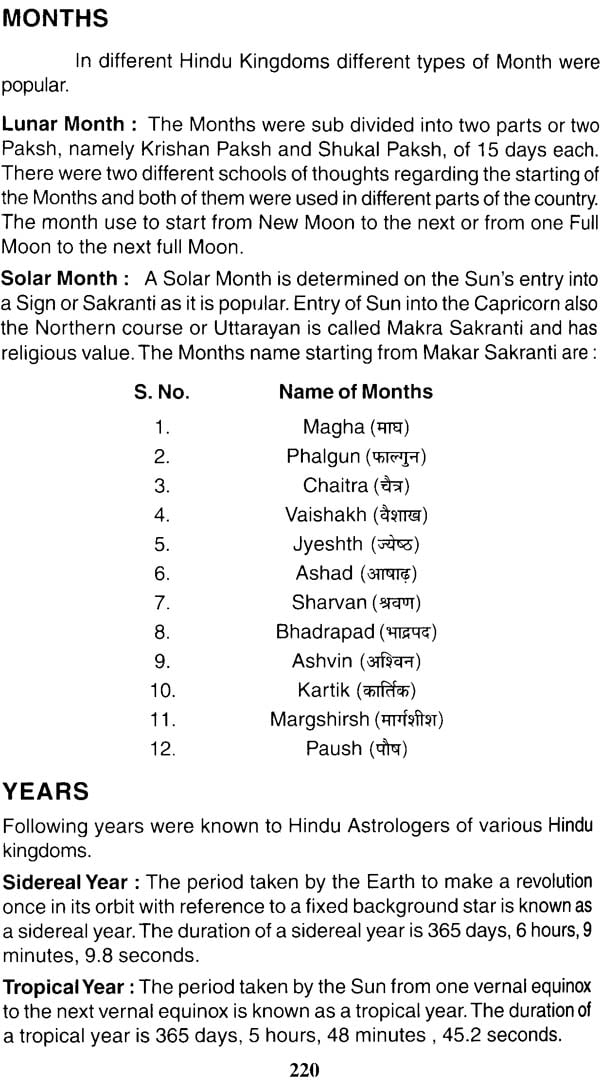
The Textbook of Astrology
Book Specification
| Item Code: | NAJ580 |
| Author: | Umang Taneja |
| Publisher: | Umang Taneja Publication |
| Language: | English |
| Edition: | 2018 |
| Pages: | 284 |
| Cover: | Paperback |
| Other Details | 8.5 inch X 5.5 inch |
| Weight | 380 gm |
Book Description
You are holding a profound knowledge of astrological fundamentals. A comprehensive presentation of both Ganit and Falit Jyotish, it is useful not only to beginners of astrology but also for Practitioners.
Analysis of Uranus, Neptune and Pluto are fascinating. Myths like Manglik Dosh, Sade Sati, Kalsarp Yog, Gun Milan etc. have been dealt with, logically.
Preacher with thorough grasp of nuances of astrology, He has spread the science of astrology and its powers through TV programs, correspondence course and special classes, propounding and clarifying Nadi Astrology used for scientific and accurate predictions.
The science of astrology reveals with his expertise in this comprehensive book.
Astrology has been the domain of sages and Brahmins. Sages from pre Vedic era had very good knowledge of Astrology. Astrology has two main branches 1. Jaimini Astrology 2. Parashari Astrology both bear the name of Sages, Jaimini and Prashar respectively. Astrology is broadly classified into Ganit Jyotish or Mathematical Astrology and Falit Jyotish or Predictive Astrology. Both Jaimini and Parashar had different school of thought for the Falit. Jaimini gave emphasis on Degree of Planet in a House, different Ascendants and Aspects and Dasa of Signs whereas Parashar emphasized on position of Planet in House and lordship of Planets, conjunction and Aspects of Planets and Dasas of Planets.
Jaimini Astrology in Falit is not in use in present times. Parashari Astrology is widely used by Astrologers in India. Nadi Astrology, which is another limb of Astrology, is based upon Vimshottari Dasa only is also being used by a few. Sage Parashar has described Parashari Astrology in all time great work "Brihat Parashar Hora Shastram". The book contains both Ganit and Falit Jyotish. Sage Parashar has given enormous Rules, Planetary combinations and Dasas in his book. After sage Parashar, various scholars added their views to the system given by Sage to this world. This added confusion as the views given by a number of scholars over a number of years were contradictory. This book is based on the Parashari system of Astrology. It has been divided in to two major parts 1. Applied Hindu Astrology and 2.Traditional Astrology.
First part broadly contains Astronomy, Casting of Horoscope, and characteristics of Planets, Houses, Signs and elementary predictive techniques based on those rules of Astrology, which are proved correct after research. However, second part deals with the Astrology practiced by Traditional Pandits as ritual in Hindu religion.
First chapter of this book is on History of Astronomy, which describes how man has improved his knowledge of this subject over a period of time. It also explains in ancient times the knowledge of man in this subject was surprisingly advanced. The second chapter deals with Astronomy. The birth of the Universe, Solar system and members of the Solar system, their movements and respective movements with the Earth have been dealt exhaustively. Geographical terms, rotation and revolution of earth and respective movements of Sun, Earth and Moon have been dealt with in the chapter to understand various phenomenons in the Universe.
Concept of time is explained in the chapter, Time. In various part of India different types of charts are used. Concept of Sign, Nakshatra, Sub-lord, calculation of Ascendant and casting Horoscope is explained with examples so that readers can do it themselves. For Timing events in Hindu Astrology, Dasas are used. Three Dasa systems Yogini Dasa, Ashtottari Dasa and Vimsottari Dasa have been dealt with which are widely used in India. To predict events with precision Transits are useful and are explained in the next chapter. Basic idea of predictive technique has been explained in the chapter" How to predict?" Uranus, Neptune and Pluto are not used in Astrology by Indian Astrologers. Experiences have proved that they are also useful in Astrology. How these Planets are used for predictive purposes has also been explained. Finally, a quick look on History of Hindu Astrology is given which gives a list of Astrologers who dedicated their lives for the study and promotion of Astrology.
Second part of the book contains divisional Horoscopes, traditional way of calculation of Strength of Planets and most important of all, the explanation of various myths in Astrology which has created apprehension in Indian society. Hindu Astrology had been a way of life and was used widely by common people in ancient times. Various rituals in Hindu tradition are based upon Astronomical phenomenon (however they do not have any Astrological value) have been explained in detail. Hindu calendars and Traditional way of writing the Horoscope have also been discussed.
The book in your hand is a descriptive text and self guide to a beginner of Astrology. It is also useful to all students of Astrology because it has touched few topics, which are not found in books available today.
| Part I | Applicable Hindu Astrology | |
| Chapter I | History of Astronomy | 1-5 |
| Chapter II | Astronomy | 7-40 |
| Chapter III | Time | 41-49 |
| Chapter IV | The Horoscope | 50-57 |
| Chapter V | The Ascendant | 58-68 |
| Chapter VI | Casting Horoscope | 69-86 |
| Chapter VII | Hindu Dasa System | 87-101 |
| Chapter VIII | Planets | 102-113 |
| Chapter IX | Signs | 114-121 |
| Chapter X | Houses | 122-130 |
| Chapter XI | Relationship of Planets, Houses and Signs | 126-130 |
| Chapter XII | Transsits of Planets | 131-136 |
| Chapter XIII | How to Predict | 137-151 |
| Chapter XIV | Uranus Neptune Pluto | 152-155 |
| Chapter XV | History of Hindu Astrology | 156-159 |
| Part II | Traditional Astrology | |
| Chapter XVI | Sage Parashar on Planets for all Ascendants. | 160-166 |
| Chapter XVII | Strenght of a Planet | 167-171 |
| Chapter XXIII | Divisional charts | 172-194 |
| Chapter XIX | Myths in Astrology | 195-218 |
| Chapter XX | Hindu Tradition | 219-237 |
| Annexure | 238-267 |
